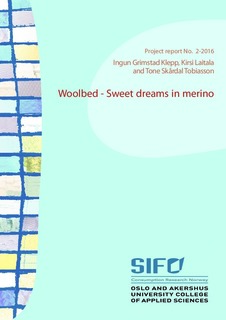Billige og dårlige klær – få klager
Live Standal Bøyum, Kirsi Laitala og Ingun G. Klepp
Sammendrag
I Norge har prisene på klær falt betydelig de siste tiårene. Forbrukerne har fått økt kjøpekraft og antallet klær vi kjøper har økt betraktelig (Klepp & Laitala, 2016, s. 67). I dag er den vanligste måten å skaffe klær på gjennom innkjøp av fast fashion, som kjennetegnes av store internasjonale selskap, vekt på markedsføring fremfor saklig informasjon, og vekt på raske endringer fremfor gode råvarer og kvalitet i produksjon. Omsetningen foregår i kjedebutikker med fokus på salg og salgsvarer og ikke på fagkunnskap. I denne rapporten vil vi se på hvordan denne utviklingen har påvirket vår tilfredshet med klærne. Billigere klær gjør at det er lettere for forbrukerne å kjøpe klær spontant, eller kjøpe klær som ikke er helt slik de ønsker (Greenpeace, 2016). Er det mange som angrer på kjøp de har gjort? Og hva gjør de dersom de angrer? Før vi analyserer spørsmålene vi stilte i SIFO survey 2017 om disse temaene, vil vi legge fram hvilke rettigheter forbrukerne har.
